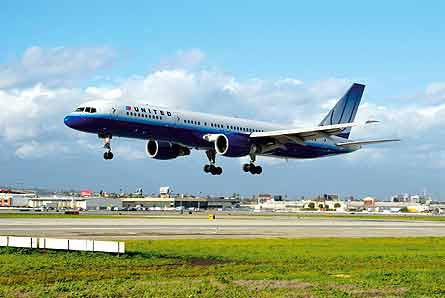NASA revisits 1990s lessons to develop crew drill for flight-control system failure
NASA is working with the US Department of Homeland Security (DHS) and United Airlines to develop guidelines for flightcrews to operate crippled aircraft using "throttles-only control". The DHS-led propulsion controlled aircraft recovery (PCAR) project revives earlier lessons learned from NASA's propulsion controlled aircraft (PCA) programme of the mid-1990s, but differs significantly in that it requires no hardware or software modifications.
The original PCA concept, which emerged after the 1989 Sioux City crash in which a United McDonnell Douglas DC-10 lost all hydraulic power, led to the development of a computer-based control system to fly aircraft using engine thrust alone. The DHS has revived interest in throttles-only control of damaged or disabled aircraft following its counter-Manpads (man-portable air defence systems) studies into protecting airliners from missile attacks.
|
|---|
| NASA will collaborate with the DHS and United to develop the project, which initially will focus on Boeing 757s |
The PCAR concept is simple and for pitch control requires the crew to increase thrust to climb and reduce thrust to descend. To turn right, the crew will increase the left engine thrust while decreasing the right engine thrust. However, since thrust response is slow, and the control forces are relatively small, NASA says specific piloting techniques are needed that can be performed by non-specialised line pilots. During the original PCA phase it justified the development of a computer-based system on the basis that a non-augmented control system would "require extensive practice and intense concentration to do this task manually".
Phase one of the PCAR project is to finish by October, when NASA is due to deliver a set of throttles-only control guidelines with specific reference to control of a Boeing 757. A second phase, due to take place from around November to June 2007, will focus on a second twinjet model, which is expected to be one of United's Airbus A320s, Boeing 737s, 767s or 777s.
|
|---|
Simulations and the single flight test have focused on the use of throttles to control an airliner through a series of manoeuvres, heading and altitude changes culminating in approach and landing. During the flight test, in which a United pilot acted as safety pilot while the NASA pilot conducted throttles-only control manoeuvres, tests were conducted at altitudes between 10,000ft (3,000m) and 100ft above ground level. "The United pilot had his hands around the yoke, but was not touching it, and his left hand at the base of the throttles - but was not interfering with them," says Cole. Throttles-only control tests were conducted with flaps at zero and 15°. During the mid-1990s a modified MD-11 completed two landings, one of which included no use of any flight-control surfaces during the approach, landing and roll-out, thus validating NASA's propulsion controlled aircraft (PCA) concept for total hydraulic failure. Operation was evaluated at 10,000ft, 20,000ft, and 30,000ft and for Mach numbers to 0.83 and airspeeds from 160kt (295km/h) to 360kt. PCA operation was checked with two of the three hydraulic systems turned off and included a manoeuvre combining 45° bank and 7° dive. |
Throttles-only control has been developed using United simulators flown by airline and NASA pilots. Phase one involves two test flights, the first of which took place in May when United and NASA test pilots flew a 757 on a simulated revenue flight from Los Angeles International to Edwards AFB, California. Although no actual throttles-only landing was made, the crew "conducted a build-down approach to 100ft (30m) above the runway," says Cole.
The second test flight, scheduled for late September, will involve regular line pilots, she adds.
Source: Flight International

















